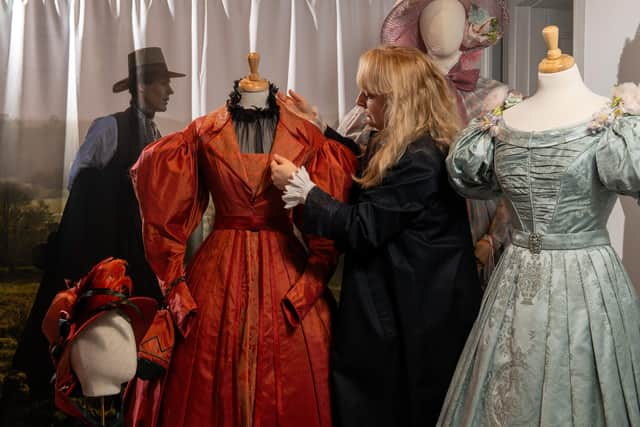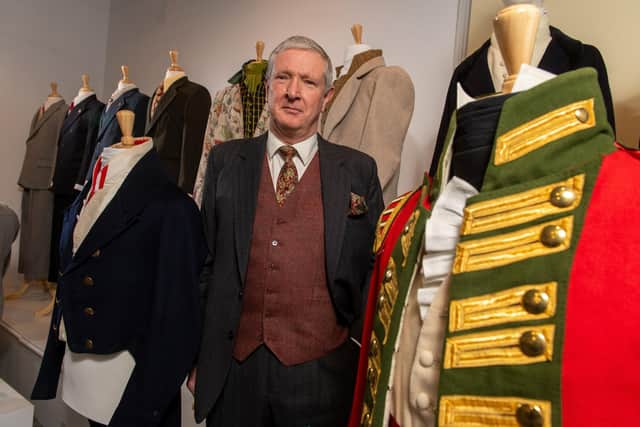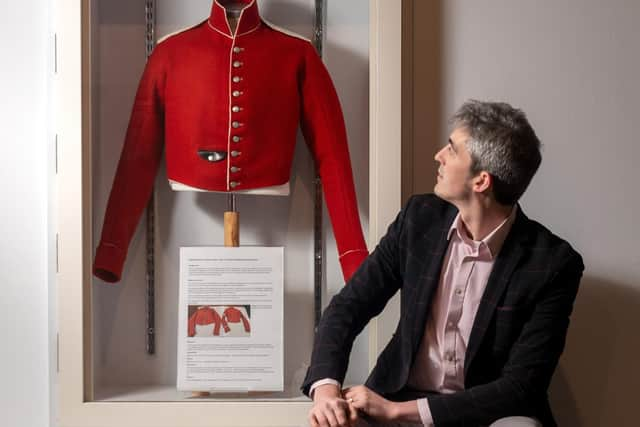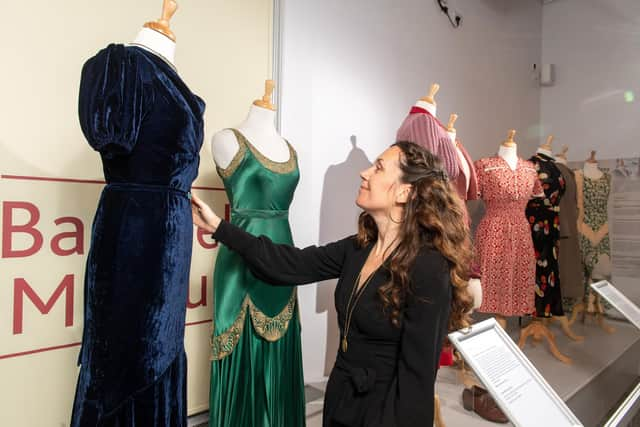Designers reveal how they use a Yorkshire museum to help recreate historical fashion like those on TV's Gentleman Jack
From the costumes for the BBC’s Gentleman Jack to historically accurate military uniforms, all have been inspired by actual period pieces in the archives of Bankfield Museum in Halifax. Now new exhibition explores the process of how you go from a museum garment to producing an item of historically inspired dress that is ready to wear.
Inspired: The Art of Making Historical Fashion at Bankfield Museum sees the new pieces alongside costumes and textiles from the Museum’s collection and films where visitors can see the makers at work and learn more about what inspires them.
Advertisement
Hide AdAdvertisement
Hide AdMuseums Manager, Richard Macfarlane, explains the idea behind the exhibition.


"We wanted to show the different types of people who used the historical collections we have here – from those creating costumes for film and television, the makers who are inspired by historical fashion to make new garments and those who want to replicate them as close as possible.”Among those exhibiting are the works of costume designer Tom Pye, who created the costumes for BBC’s Gentleman Jack
Pye was inspired by costumes of the 1830s held in the Calderdale archives but added his own touches to create the distinctive costumes worn by Suranne Jones who played Anne Lister in the Sally Wainwright series.
Pye researched men’s costumes of the period, while also bearing in mind that the real Anne, as she tells us in her diaries, did wear skirts, petticoats and corsets.
Advertisement
Hide AdAdvertisement
Hide Ad“It came from the diary, a lot of it, but then I exaggerated it,” he says. “I don’t think the real Anne Lister looked quite like that. It’s an exaggeration, and I wanted her to look cool. I wanted gay women to have an icon. It’s so rare that we see that kind of character on TV.


“The relationship with Bankfield has been lovely, and key to the research and development of the whole project. They have amazing archives of original clothing, so I looked at all their 1830s clothes for construction and fabric ideas.
Pye and the team make the costumes in much the same way that they would have been made in the 1830s. “The structure and construction of what is underneath those dresses is exactly the same,” he says.
“They had these little feather pillows that tied on to the corset straps at the top of the arm to support the big sleeves, and we did that exactly the same way.”
Advertisement
Hide AdAdvertisement
Hide Ad

Corset maker Jennifer Garside of Wyte Phantom has two of her corsets on display in the exhibition and says her work is inspired by the historical costumes in museum archives such as those at Bankfield.
“My work is very much inspired by the Victorian fashions in museums like Bankfield, rather than an actual recreation like some of the makers in this exhibition,” says Garside.
“After the Second World War corsets disappeared and so did the art of making them. You can only tell so much for a photograph you really have to see and feel the original corsets. People think they were really rigid and uncomfortable but that was not the case at all. People worked wearing them and so they are far more soft and flexble than people imagine.” Garside often uses recycled fabrics as in her white angel corset that is on display at Bankfield.Burton-upon-Trent based Garside, who is a great supporter of museums and was pleased be asked to exhibit her work, was excited about one particular original corset that is on display alongside her own work.
Advertisement
Hide AdAdvertisement
Hide Ad“There is a red corset that I really got quite giddy about. It was bit grubby on the inside and you can actually see how it was laced. There is a a lot of argument about how corsets were laced and it was fascinating to see.”


Rob Cooper from Halifax has six of his men’s regency costumes in the exhibition. He has had a long standing relationship with Bankfield.
"I was at school when I first went to the museum and became fascinated with history and what it can teach us,” says Cooper.
"I realised quite early on that it wasn’t enough to just look at these items in a case you needed to touch and feel them to get a real understanding of the period and how they were worn.” It is the Regency period in particular the fascinated him and when he struggled to get hold of costumes, he decided to make his own.
Advertisement
Hide AdAdvertisement
Hide Ad"This is not fancy dress,” he stresses. “I try to reproduce the costumes as close to the real thing as I can.”
Having left school at 16 with no qualifications Cooper worked as a technician with the Police until he realised in his 40s it wasn’t the career for him. As a mature student he enrolled on a Theatrical Costume course at Leeds University and it changed his life.
Not only did he meet lots of interesting people he realised that he was dyslexic and learnt differently from most people. Since then he has gone onto do Masters in Philosophy and if he can get the funding, a Phd.
He has six of his costumes on display in the Bankfield exhibition and is also in the process of making costumes for his family for the Regency Summer Ball also held at Bankfield.
Advertisement
Hide AdAdvertisement
Hide AdThe Art of Making Historical Fashion is part of Calderdale’s Year of Culture 2024 celebrations and an Arts and Humanities Research Council (AHRC) funded project with the London College of Fashion called ‘Exhibiting Fashion: exhibition-making and curation as a catalyst for advancing innovative museum practices.’
Comment Guidelines
National World encourages reader discussion on our stories. User feedback, insights and back-and-forth exchanges add a rich layer of context to reporting. Please review our Community Guidelines before commenting.